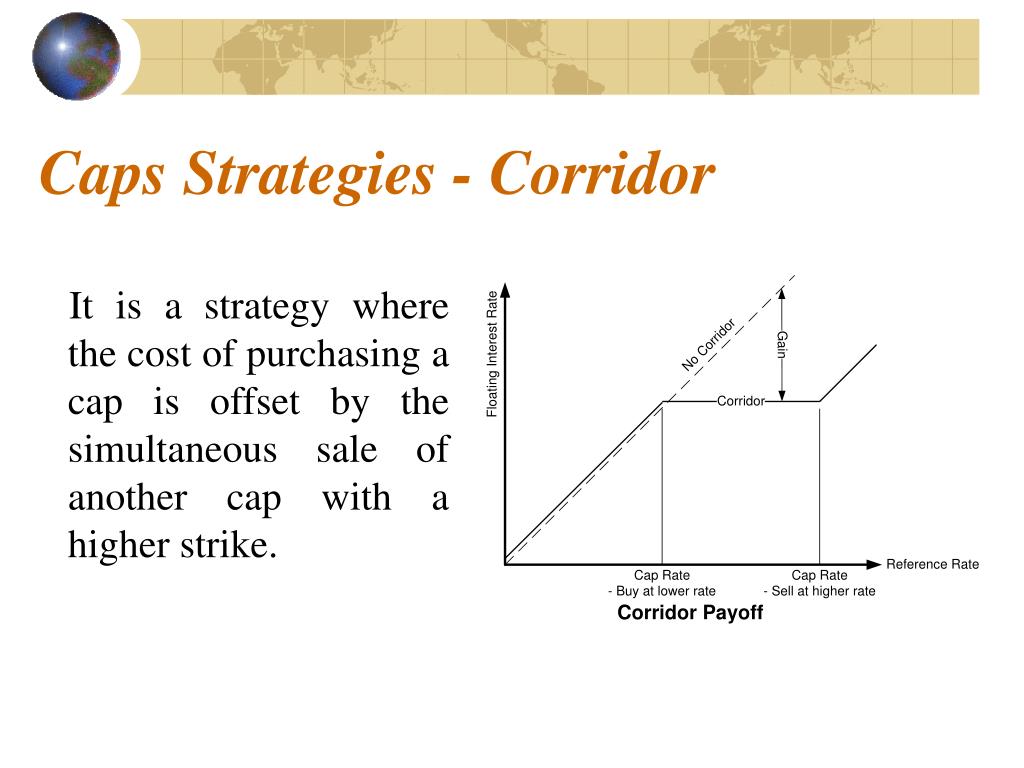Underlying risk reversal collar.
Collars and price floors caps.
While the collar effectively hedges.
You use template s40caflcol to map caps floors and collars as unstructured transactions in the source data layer sdl.
This creates an interest rate range and the collar holder is protected from rates above the cap strike rate but has forgone the benefits of interest rates falling below the floor rate sold.
These products are used by investors and borrowers alike to hedge against adverse interest rate movements.
Unlike for other options the system does not use the option data tab page to map caps floor and collars the option information is contained within the condition data and in the cash flow generated on the basis of the condition data.
They are most frequently taken out for periods of between 2 and 5 years although this can vary considerably.
An interest rate collar can be created by buying a cap and selling a floor.
A collar involves selling a covered call and simultaneously buying a protective put with the same expiration establishing a floor and a cap on interest rates.
An interest rate cap is a derivative in which the buyer receives payments at the end of each period in which the interest rate exceeds the agreed strike price an example of a cap would be an agreement to receive a payment for each month the libor rate exceeds 2 5.
Cap and floor payoffs and interest rate collars.
Buying a put option at strike price x called the floor selling a call option at strike price x a called the cap.
Interest rate caps floors and collars these option products can be used to establish maximum cap or minimum floor rates or a combination of the two which is referred to as a collar structure.
The premium income from selling the call reduces the cost of purchasing the put.

